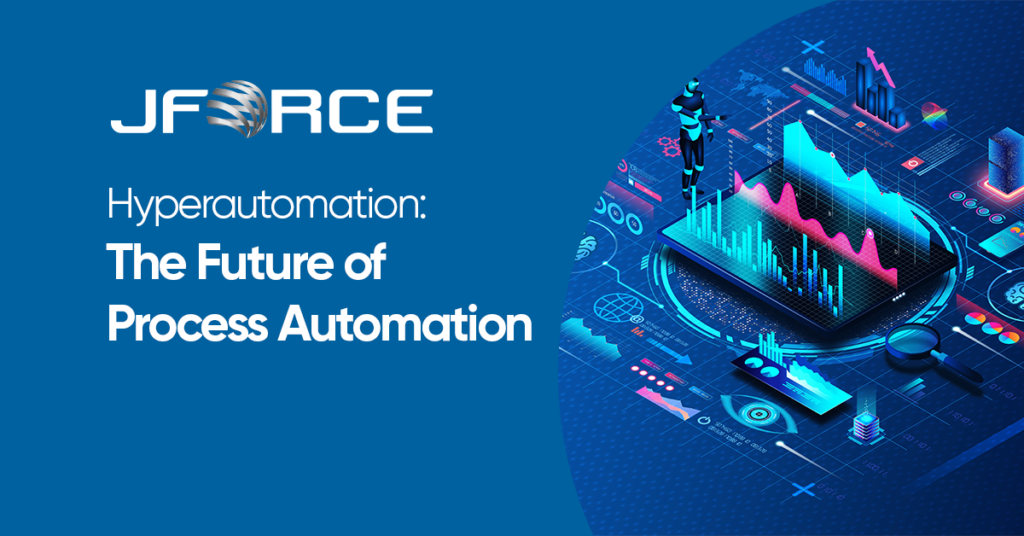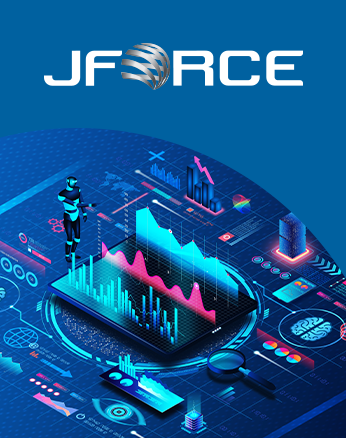
Gartner named 10 technology trends that businesses should keep an eye on in the upcoming year. These trends were mainly influenced by the new realities of the business world at large and were meant to inspire enterprises to adapt to these new said realities.
One of the trends highlighted by Gartner specialists was hyperautomation. While automation will be familiar to most people, hyperautomation is a relatively recent term. So, let’s take a closer look at it to discover what it implies, what businesses can make use of it, what technologies it includes, and what benefits they offer.
What is hyperautomation?
IBM defines hyperautomation as a business approach where all the tasks that can be automated are automated using diverse advanced technologies. Beyond a tool or software that helps process automation, hyperautomation is an infrastructure that ensures that the entire workflow is efficient.
Hyperautomation is such an inclusive term that it may cover any digital practice that results in automation in any stage of the business.
It uses a combination of tools like Business Rules, Process Management, AI, RPA, or process mining. Therefore, you can gather data on how humans accomplish tasks within a workflow. Then, the system uses this data to automate it to create more productive processess. As the system learns with the help of its AI-based structure, the process can automatically improve and adapt to changes in time.
Automation vs. Hyperautomation: What's the Difference?
Although hyperautomation and automation are very similar when explained in theory, there is an important difference between them in the application.
Just automation usually refers to the practice of automating one single aspect of your business, like using robots in manufacturing or using chatbots to answer your client’s simple questions.
For years, companies have leveraged business process automation using solutions including RPA with Business Process Management and Decision Management combined AI to improve workflows and security.
RPAs get the task-centric, rule-based jobs done while AI for data-driven modeling powered by business rules mimics the human learning and decision making capabilities. However, with the hyperautomation using both and more technologies, process automation is taking yet another twist.
Likewise, the rise of AI-driven rule engines also seems to impact the future of process automation. The rule engines are used to simplify complicated processes. It sets the rules, takes action towards the goals, and converts ideas into decisions.
Hyperautomation is offering a whole big self-learning and self-improving system that aims to automate every aspect of a business that saves time that can be better spent elsewhere.
Why Does It Matter?
Hyperautomation saves so much time. It offers timelier decision making and a smaller margin of error while saving your employees' valuable time. With it, people can focus more on the jobs that only human beings can do.
McKinsey has reported that 2.6 trillion hours’ worth of work is automated every year in the US. With numbers that high, people start to wonder about the true potential of automation and ways to improve their workflows with more comprehensive systems like hyperautomation.
However, in the years to come, hyperautomation is expected to be more than just another method you can use to improve your workflow. Hyperautomation is fast becoming the standard way of doing business. More companies are taking data-driven steps for even better results with hyperautomation, placing them in a much stronger competitive position.
This is why hyperautomation, which is currently seen as the last level of digital transformation, is of great importance.
How Can Business Verticals Use Hyperautomation?
McKinsey reported that in the US alone, businesses spend 2.7 trillion USD on jobs that are the most susceptible to automation. Any business looking to generate more profits and boost growth can benefit from hyperautomation.
There are no limits to using hyperautomation to take much more predictable steps and maximize efficiency in certain areas. It can be used in many different ways, depending on the nature and requirements of the job.
The banking and financing world uses it to help with the ceaseless number crunching and data processing they have to go through on a daily basis. The Healthcare industry uses hyperautomation to process critical information on countless patients and manage their inventory at hospitals. Accountants and auditors use it to eliminate the process of manually writing pages and pages of excel sheets that they need to do. However, the hyperautomation as an approach is losing its meaning when we focus on specific ways to use it.
Any business that has to deal with a high volume of data can use hyperautomation to save hours and improve employee productivity by getting rid of repetitive tasks. As a result, they can create a systematic approach to automation, which helps to get closer to their agility goals.
Conclusion
Hyperautomation is not some new, untested practice that came out of the blue with promises to change the business world. Instead, it is the combination of already true and tested methods that creates one prominent system.
We will definitely see more hyperautomation in every aspect of business in the future. Although it has already improved the workflow in many areas, we will see the transformation that hyperautomation will create in the business world, which we have not yet met with its full potential.
